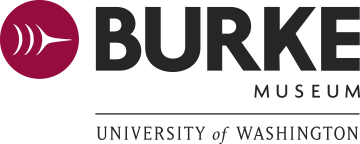Marasmiaceae
15 genera
33 species
33 species
Show only taxa with photos
Order by:
Scientific name
Common name
Display as:



Index to genera:
Atheniella, Baeospora, Calathella, Calyptella, Clitocybula, Crinipellis, Henningsomyces, Hydropus, Macrocystidia, Marasmiellus, Marasmius, Megacollybia, Mycetinis, Pleurocybella, RhodocollybiaAtheniella aurantiidisca – candy-corn mycena
Distribution: Coniferous forests in western North America.
Habitat: Coniferous forests with Pseudotsuga, Tsuga and Pinus.
Substrate: Soil.
Distribution: Coniferous forests in western North America.
Habitat: Coniferous forests with Pseudotsuga, Tsuga and Pinus.
Substrate: Soil.
Baeospora myosura – conifer-cone baeospora, conifercone cap, conifer conecap, spruce-cone mushroom
Description: Small, tan to whitish cap with crowded, white gills and white to brownish stalk; on fallen conifer cones
Substrate: Spruce and Douglas fir cones
Spores: September to October
Description: Small, tan to whitish cap with crowded, white gills and white to brownish stalk; on fallen conifer cones
Substrate: Spruce and Douglas fir cones
Spores: September to October
Baeospora myriadophylla – lavender baeospora
Description: Fresh specimens are quite striking when plucked from a log and turned over to reveal the crowded, narrow, lilac gills. The thin-fleshed caps and the stipes are usually brownish, occasionally with lilac tones, and develop grayish or paler tones with age or loss of moisture. The tough, hollow stipe is usually somewhat pruinose above and has white short hairs on the base. B. myriadophylla is an uncommon fungus and usually occurs in small numbers in fall or spring.
Substrate: Hardwood logs and stumps
Spores: June to October
Description: Fresh specimens are quite striking when plucked from a log and turned over to reveal the crowded, narrow, lilac gills. The thin-fleshed caps and the stipes are usually brownish, occasionally with lilac tones, and develop grayish or paler tones with age or loss of moisture. The tough, hollow stipe is usually somewhat pruinose above and has white short hairs on the base. B. myriadophylla is an uncommon fungus and usually occurs in small numbers in fall or spring.
Substrate: Hardwood logs and stumps
Spores: June to October
Clitocybula atrialba – black and white clitocybula
Habitat: C. atrialba is a western species that occurs singly on the (sometimes buried) wood of alder and perhaps other hardwoods.
Substrate: Wood or woody debris
Spores: whitish amyloid spores
Habitat: C. atrialba is a western species that occurs singly on the (sometimes buried) wood of alder and perhaps other hardwoods.
Substrate: Wood or woody debris
Spores: whitish amyloid spores
Macrocystidia cucumis – cucumber cap, cucumber-scented mushroom
Distribution: Usually found in nutrient-rich soils among herbaceous plants in gardens and parks rather than in forests (although it can occur there, usually along trailsides).
Distribution: Usually found in nutrient-rich soils among herbaceous plants in gardens and parks rather than in forests (although it can occur there, usually along trailsides).
Marasmiellus peronatus
Distribution: Northern hemisphere.
Habitat: Forests and woodlands.
Substrate: Leaf litter and woody debris on ground.
Distribution: Northern hemisphere.
Habitat: Forests and woodlands.
Substrate: Leaf litter and woody debris on ground.
Marasmius epiphyllus – leaf parachute, white pinwheel
Marasmius oreades – fairy ring champignon, fairy ring mushroom
Distribution: The most common species in the PNW, M. oreades, occurs in many parts of the world in lawns, parks, pastures, and other grassy areas, where it often grows in arcs or circles known as fairy rings.
Distribution: The most common species in the PNW, M. oreades, occurs in many parts of the world in lawns, parks, pastures, and other grassy areas, where it often grows in arcs or circles known as fairy rings.
Marasmius plicatulus – velvet-cap Marasmius, pleated mushroom
Pleurocybella porrigens – angel's-wings
Distribution: Found on conifer (especially hemlock) logs and stumps throughout the PNW, often occurring in large, exquisite, imbricate masses
Distribution: Found on conifer (especially hemlock) logs and stumps throughout the PNW, often occurring in large, exquisite, imbricate masses
Rhodocollybia butyracea – butter-cap, buttery Collybia
Habitat: Conifer forests
Spores: pale pinkish buff, relatively large (mostly 7-9 x 3.5-4 µm) and tear-shaped, almond-shaped, or ellipsoid
Habitat: Conifer forests
Spores: pale pinkish buff, relatively large (mostly 7-9 x 3.5-4 µm) and tear-shaped, almond-shaped, or ellipsoid
Rhodocollybia maculata – spotted Collybia, spotted toughshank
Substrate: Clusters on or near rotting conifer wood
Substrate: Clusters on or near rotting conifer wood
Rhodocollybia oregonensis – fragrant Collybia

